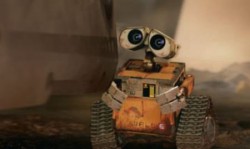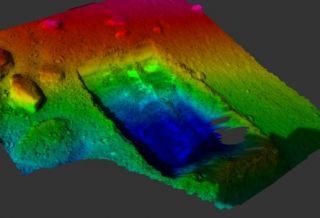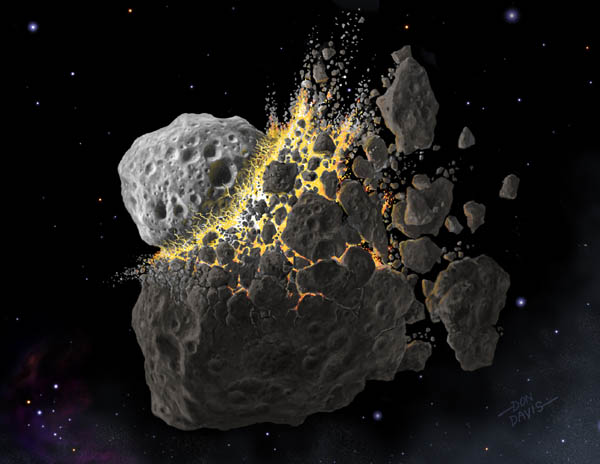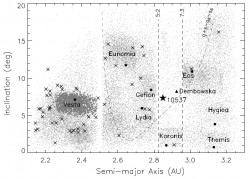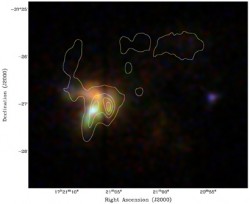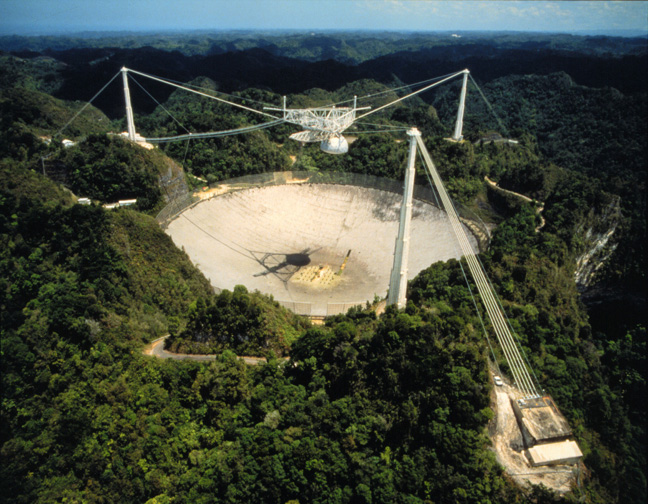The Solar System’s outer reaches still contain many minor planets yet to be discovered. Ever since the search for Planet X began in the early 20th Century, the possibility of a hypothetical planet orbiting the Sun beyond the Kuiper Belt has fuelled many Doomsday theories and speculation that Planet X is actually the Sun’s long lost binary sibling. But why the fear about the Planet X/Doomsday combination? Surely Planet X is just an unknown, hypothetical object and nothing sinister?
Related 2012 articles:
As I’ve previously discussed in “2012: No Planet X“, doomsayers have linked the modern day search for Planet X, the ancient Mayan 2012 Prophecy and the Sumerian mythical planet Nibiru, culminating in bad news for December 21st 2012. However, the astronomical evidence for these links is seriously flawed.
Yesterday (Wednesday, June 18th), Japanese researchers announced news that their theoretical search for a large mass in the outer Solar System has produced results. From their calculations, there might just be a planet, possibly a bit bigger than a Plutoid but certainly smaller than Earth orbiting beyond 100 AU from the Sun. But before we get carried away, this is not Nibiru, this is not proof of the end of the world in 2012; it is a new and very exciting development in the search for minor planets beyond the Kuiper Belt…
In a new theoretical simulation, two researchers have deduced that the outermost reaches of the Solar System may contain an undiscovered planet. Patryk Lykawka and Tadashi Mukai of Kobe University have published a paper in the Astrophysical Journal detailing a minor planet that they believe may be interacting with the mysterious Kuiper Belt.
Kuiper Belt Objects (KBOs)
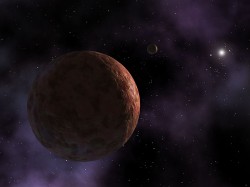
The Kuiper Belt occupies a huge region of space, approximately 30-50 AU from the Sun. It contains a vast number of rocky and metallic objects, the largest known body being the dwarf planet (or “Plutoid”) Eris. It has been known for many years that the Kuiper Belt has a few strange characteristics that may signal the presence of another large planetary body orbiting the Sun beyond the Kuiper Belt. One such feature is the aptly named “Kuiper Cliff” that occurs at 50 AU. This is an abrupt end to the Kuiper Belt, very few Kuiper Belt objects (or KBOs) have been observed beyond this point. This cliff cannot be attributed to orbital resonances with massive planets such as Neptune, and there doesn’t appear to be any obvious observational error. Many astronomers believe that such a sharp cut-off in KBO population may be due to an as-yet to be discovered planet, possibly as large as Earth. This is an object Lykawka and Mukai believe they have calculated to exist.
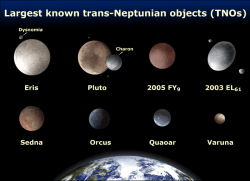
This research predicts a large object, 30-70% the mass of the Earth, orbiting at a distance of around 100-200 AU from the Sun. This object may also help explain why some KBOs and tran-Neptunian objects (TNOs) have some strange orbital characteristics (such as Sedna).
Ever since Pluto was discovered in 1930, astronomers have been looking for another more massive body that could explain the orbital perturbations observed in the orbits of Neptune and Uranus. This search became known as the “search for Planet X”, which literally meant the “search for an as yet unidentified planet.” In the 1980’s these perturbations were put down to observational error. Therefore, the modern-day scientific search for Planet X is the search for a large KBO or a minor planet beyond. Although Planet X may not be larger than the mass of the Earth, researchers are still very excited about finding more KBOs, possibly the size of a Plutoid, possibly a little bigger, but not much bigger.
“The interesting thing for me is the suggestion of the kinds of very interesting objects that may yet await discovery in the outer solar system. We are still scratching the edges of that region of the solar system, and I expect many surprises await us with the future deeper surveys.” – Mark Sykes, Director of the Planetary Science Institute in Arizona.
Planet X is not scary
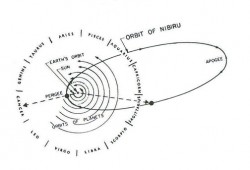
So where does Nibiru come in? Back in 1976 a controversial book called “The Twelfth Planet” was written by Zecharia Sitchin. Sitchin had interpreted some ancient Sumerian cuneiform texts (the earliest known form of writing) as a literal translation of the origin of humankind. These 6000 year old texts apparently reveal that an alien race known as the Annunaki travelled to Earth on a planet called Nibiru. It’s a long and involved story, but in a nutshell, the Anunnaki genetically modified primates on Earth to create homo sapiens to be their slaves. (I just worked out where the storyline for Kurt Russell’s 1994 movie Stargate probably came from…)
When the Anunnaki left Earth, they let us rule the planet until they return. All this may seem a little fantastical, and perhaps a little too detailed when considering it is a literal translation from 6000 year old texts. Sitchin’s work has been disregarded by the scientific community as many of his methods of interpretation are considered imaginative at best. Nevertheless, many people have taken Sitchin’s work literally, and believe Nibiru (in its highly eccentric orbit around the Sun) will be returning, possibly as soon as 2012 to cause all sorts of terror and destruction here on Earth. It is important to note here that I am not calling into question any archaeological, spiritual or historic evidence for Nibiru, I am simply pointing out the link between the 2012 Doomsday Planet X theory is based on very dubious astronomical “discoveries”; if this is the case, how can Planet X be considered to be the embodiment of Nibiru?
Then there’s the IRAS “discovery of a brown dwarf in the outer Solar System” in 1984 and the “NASA announcement of a 4-8 Earth mass planet travelling toward Earth” in 1993. Doomsayers (often with a book to sell) cling on to these astronomical discoveries as proof that Nibiru is in fact the Planet X astronomers have been searching for over the last century. Not only that, by manipulating the facts about these scientific studies, they “prove” that Nibiru is travelling toward us, and by 2012, this massive body will pass through the inner Solar System, causing all sorts of gravitational damage. For more information on this topic, see “2012: No Planet X.”
In its purest form, Planet X is an unknown, theoretically possible planet orbiting peacefully beyond the Kuiper Belt. If yesterday’s announcement does lead to the observation of a planet or Plutoid, it will be an incredible discovery that will help to shed some light on the evolution and characteristics of the mysterious outer reaches of the Solar System.
But as I write, I can guarantee that doomsayers are adapting this new research to be used as support for their nonsensical theories that Planet X is in fact Nibiru, and it’s coming in our direction by 20 12 2012. Why do I get the feeling we’ll still be here in the year 2013?
Leading image credits: MIT (supernova simulation), NASA (Pluto and Charon). Effects and editing: myself.


